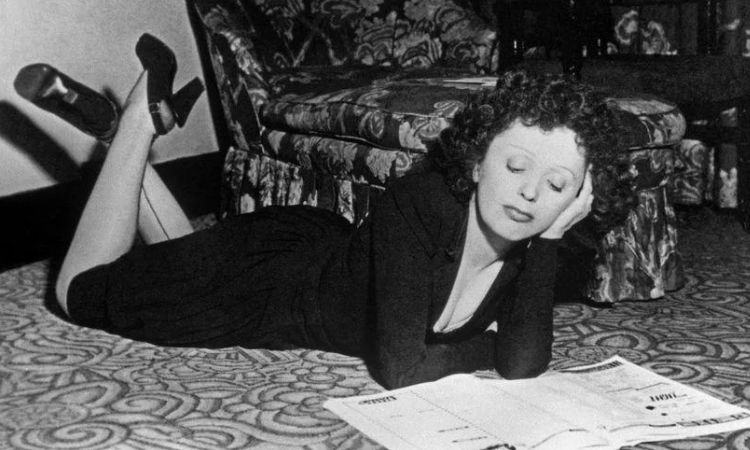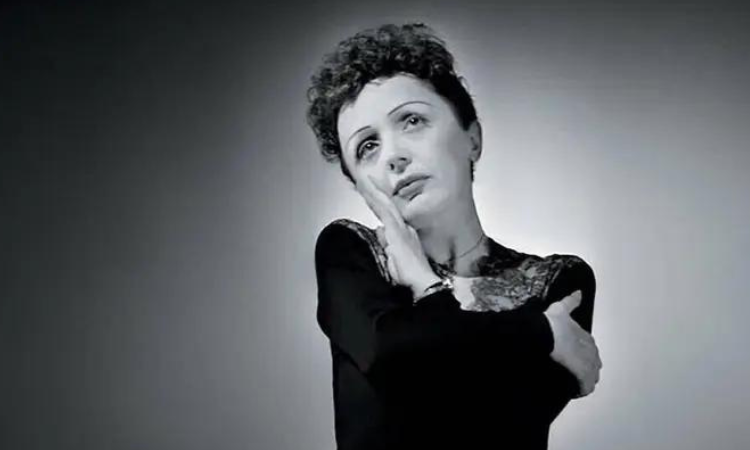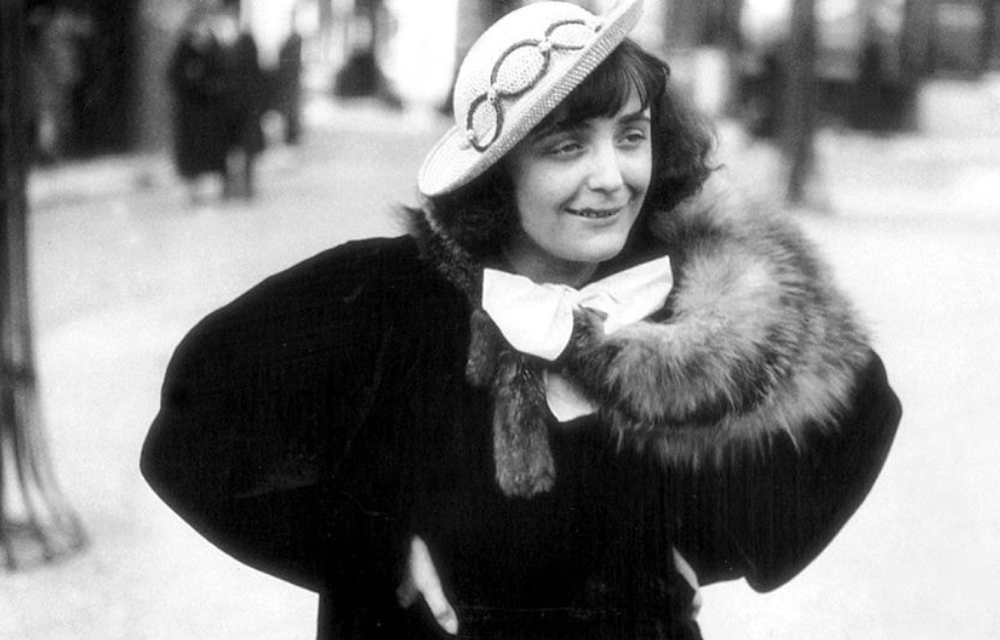Édith Piaf, one of France’s greatest popular singers, left an indelible mark on the world with her emotive voice and unforgettable songs. Her music was often autobiographical, drawing from her tumultuous life filled with love, loss, and sorrow. Born Édith Giovanna Gassion in December 1915, Piaf began her career singing in the streets of Paris before rising to international fame. Let’s dive into some of her most celebrated songs that continue to captivate audiences today.
1. La Vie En Rose
“La Vie En Rose” is perhaps Édith Piaf’s signature song, a beautiful ballad that paints the world in rosy hues through the lens of love. Written in 1945, it quickly became an anthem of post-World War II hope and renewal. The song’s lyrics, which Piaf co-wrote, express the joy and contentment of finding true love. It became immensely popular in France and eventually worldwide, earning Piaf her place as a beloved icon. The song’s enduring appeal lies in its universal theme of love and its simple, yet powerful, melody.
2. Non, Je Ne Regrette Rien
Released in 1960, “Non, Je Ne Regrette Rien” is a defiant anthem of self-acceptance and resilience. The title translates to “No, I do not regret anything,” and it became particularly poignant as it was dedicated to the French Foreign Legion. Piaf’s powerful delivery, backed by the orchestration of Robert Chauvigny, made this song an instant classic. It resonates with anyone who has faced challenges and emerged stronger, refusing to let regrets overshadow their life. The song remains a testament to Piaf’s own turbulent life, marked by hardships but lived with no regrets.
3. Hymne à l’Amour
“Hymne à l’Amour,” written in 1949, is a heartfelt tribute to Piaf’s lover, the French boxer Marcel Cerdan, who tragically died in a plane crash. This song captures the depth of Piaf’s sorrow and longing, making it one of her most poignant works. The lyrics, filled with raw emotion, and Piaf’s soul-stirring performance make this song a timeless expression of love and loss. The music was written by Marguerite Monnot, one of Piaf’s close collaborators, further adding to its emotional weight. “Hymne à l’Amour” stands as a moving testament to the power of love and the pain of losing it.
4. Milord
In 1959, Piaf released “Milord,” a song that tells the story of a lower-class girl who falls in love with a British traveler. The song’s narrative style and lively rhythm made it a standout in Piaf’s discography. Written by Georges Moustaki and Marguerite Monnot, “Milord” showcases Piaf’s ability to convey complex emotions through her voice. The song was a hit in Europe and even found success in the United States, further cementing Piaf’s status as an international star. “Milord” is a perfect example of Piaf’s talent for storytelling through music, combining a catchy melody with a compelling narrative.
5. La Foule
“La Foule,” released in 1957, is another of Piaf’s great songs that captures the essence of fleeting romance. The song narrates a chance meeting with a stranger in a crowded place and the bittersweet parting that follows. The lyrics, originally written in Spanish and adapted into French, convey the whirlwind of emotions experienced in such an encounter. Piaf’s performance brings the story to life, making the listener feel the rush of the crowd and the ache of parting. “La Foule” is a testament to Piaf’s ability to evoke vivid imagery and deep emotions through her music.
6. L’Accordéoniste
“L’Accordéoniste,” written by Michel Emer in 1940, tells the story of a prostitute who falls in love with an accordion player who is sent to war. This song, with its poignant narrative and melancholic melody, showcases Piaf’s skill in conveying complex emotions. The song’s lyrics reflect themes of love, loss, and longing, common in Piaf’s music. “L’Accordéoniste” became one of Piaf’s early hits and remains a favorite among fans for its emotional depth and storytelling.
7. Padam, Padam…
Released in 1951, “Padam, Padam…” is a haunting waltz that describes how a song’s melody can evoke memories of a past lover. The repetitive refrain “Padam, Padam” mimics the sound of a beating heart, symbolizing the relentless nature of these memories. Piaf’s interpretation of the song brings out its haunting quality, making it a standout piece in her repertoire. The song’s composer, Norbert Glanzberg, created a melody that perfectly complements the lyrics, resulting in a timeless classic.
8. Sous Le Ciel De Paris
“Sous Le Ciel De Paris,” or “Under the Sky of Paris,” was released in 1954 and paints a picturesque view of life in Paris. The song captures the charm and romance of the city, reflecting Piaf’s deep connection to her hometown. The lyrics describe various scenes and characters in Paris, all united under the same sky. Piaf’s rendition of the song became iconic, encapsulating the spirit of Paris for listeners worldwide. “Sous Le Ciel De Paris” remains one of the most beloved songs about the French capital.
9. Mon Dieu
“Mon Dieu,” released in 1960, is a powerful ballad that showcases Piaf’s ability to convey deep emotion through her music. The song is a plea to God, reflecting themes of sorrow and longing. Piaf’s performance is both vulnerable and intense, making “Mon Dieu” a standout piece in her discography. The song’s lyrics, written by Michel Vaucaire and composed by Charles Dumont, capture the essence of Piaf’s style—intensely personal and emotionally charged.
10. Mon Manège À Moi
“Mon Manège À Moi,” released in 1958, is a whimsical song that explores themes of love and joy. The song’s title translates to “My Merry-Go-Round,” and it was featured in the film “Mon oncle.” The playful melody and Piaf’s joyful delivery make this song a delightful addition to her repertoire. The lyrics describe the dizzying feeling of being in love, likening it to riding a carousel. “Mon Manège À Moi” is a testament to Piaf’s versatility as a performer, able to convey both profound sorrow and boundless joy through her music.
11. Tu Es Partout
“Tu Es Partout,” released in 1943, is a song that reflects themes of lost love and longing. The song was featured in the film “Montmartre-sur-Seine” and became one of Piaf’s early hits. The lyrics describe the omnipresence of a lost lover, haunting the singer’s every thought. Piaf’s performance is deeply moving, capturing the pain of love lost. “Tu Es Partout” is a classic example of Piaf’s ability to turn personal sorrow into universally relatable music.
The Life and Career of Édith Piaf

Édith Piaf, affectionately known as La Môme Piaf (The Little Sparrow), is one of the most iconic French singers of all time. Piaf’s life was as dramatic and poignant as the songs she sang, filled with both triumph and tragedy. Born Édith Giovanna Gassion on December 19, 1915, Piaf’s birth into a life of poverty set the stage for a remarkable journey that would see her rise from the streets of Paris to international stardom.
Early Life and Career Beginnings
Piaf began her singing career on the streets of Paris, performing in front of cafes and on street corners to make ends meet. Her powerful, emotive voice quickly caught the attention of Louis Leplée, a nightclub owner who offered her a chance to perform at his club. It was Leplée who gave her the stage name “La Mome Piaf,” a nickname that would stick with her throughout her career. This opportunity marked the beginning of her ascent in the music world.
During World War II, Piaf’s fame increased as she performed for both German soldiers and members of the French Resistance. Her performances provided comfort and hope during a dark time. Piaf recorded numerous songs that captured the spirit and resilience of the French people. Her career touring Europe and the world brought her international acclaim. Despite her success, Piaf’s life was marked by personal tragedies, including the deaths of several lovers and her struggles with addiction.
Notable Songs and Awards
Édith Piaf’s music spans various themes, from the joy of love to the sorrow of loss. Piaf’s songs like “La Vie en Rose,” “Non, Je Ne Regrette Rien,” and “Hymne à l’Amour” have become timeless classics. Her torch ballads and chanson réaliste style made her a beloved figure in France and beyond.
One of the most notable moments in recognizing Piaf’s impact on popular culture came in 2007 when Marion Cotillard portrayed her in the film “La Vie en Rose.” Cotillard’s performance was so compelling that she won an Academy Award for Best Actress, bringing renewed attention to Piaf’s legacy and introducing her music to a new generation.
Piaf’s life has been the subject of numerous books and biographies, capturing her remarkable journey and the essence of her music. One notable biography is “No Regrets: The Life of Edith Piaf” by Carolyn Burke. This book delves into Piaf’s complex personality, her struggles, and her triumphs, offering readers an in-depth look at the woman behind the legend.
Personal Life and Struggles
Piaf’s personal life was filled with dramatic highs and lows. She had several tumultuous relationships, including a passionate romance with the French boxer Marcel Cerdan, who tragically died in a plane crash. This loss deeply affected Piaf and inspired some of her most heartfelt songs. Her battle with addiction and health issues also marked her later years, but she continued to perform and record music until her death.
Legacy and Influence
Despite passing away at the age of 47 in 1963, Édith Piaf’s legacy continues to thrive. Her recordings remain popular, and the life story of the French singer continues to captivate audiences. Piaf’s songs have been covered by numerous artists, and her influence can be seen in various musical genres.
Interestingly, Piaf never recorded “L’Homme de Berlin,” yet her extensive discography includes many other iconic songs that have stood the test of time. La Môme Piaf’s contributions to music have earned her a place among the most celebrated performers of all time. Her ability to convey deep emotion through her voice and lyrics has made her a timeless figure in the world of music.
Conclusion

Édith Piaf’s life and career are a testament to the power of resilience and the enduring appeal of heartfelt music. From her humble beginnings to her rise as a global icon, Piaf’s journey is one of inspiration and passion. Her story, immortalized in books like “No Regrets: The Life of Edith Piaf” and films like “La Vie en Rose,” continues to inspire and move people around the world. Whether remembered as Édith Piaf or La Môme Piaf, her legacy as one of the greatest French singers remains unchallenged.


